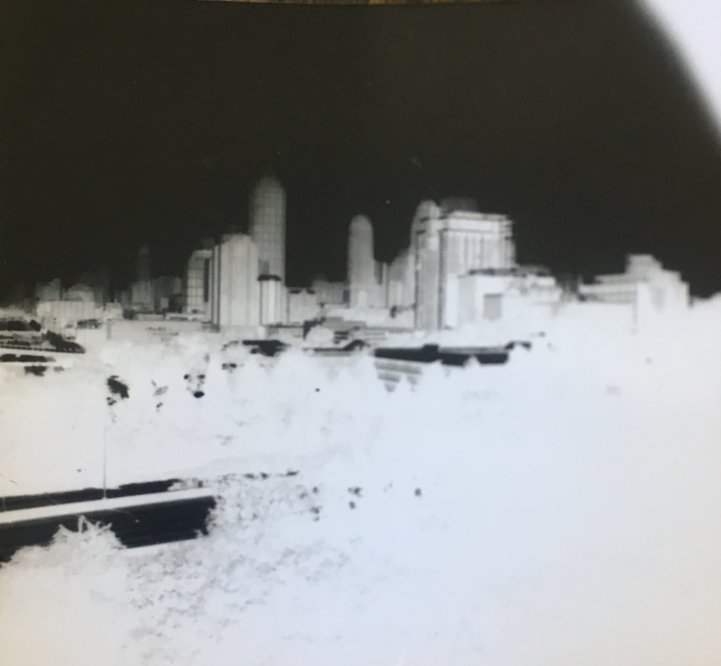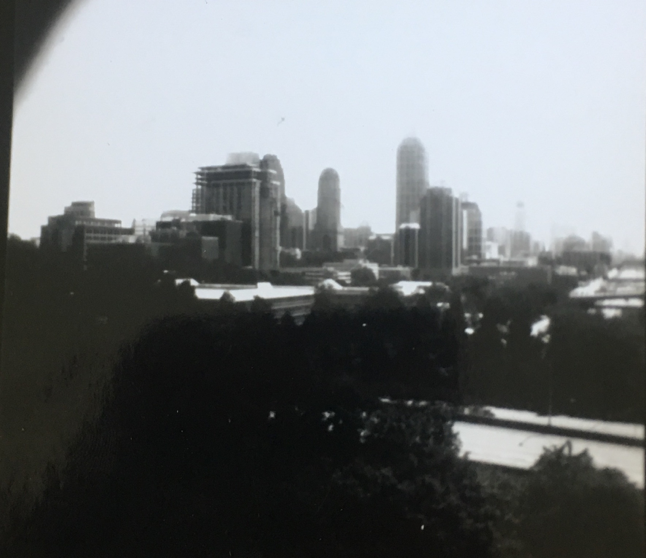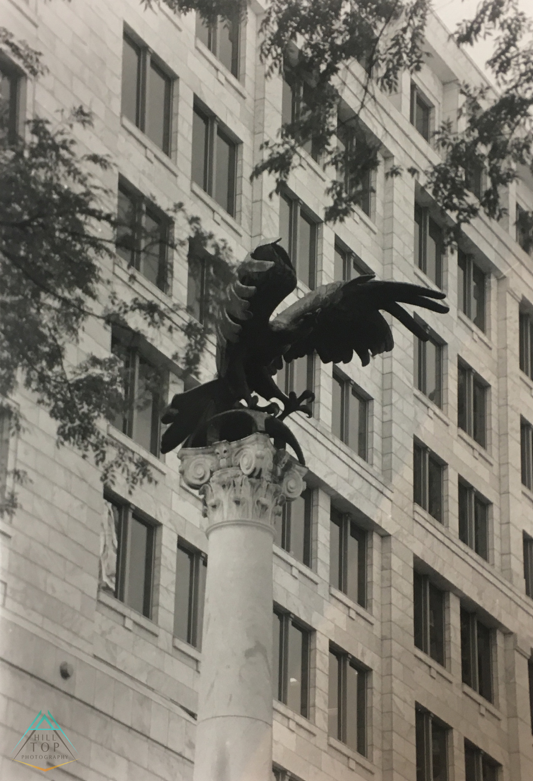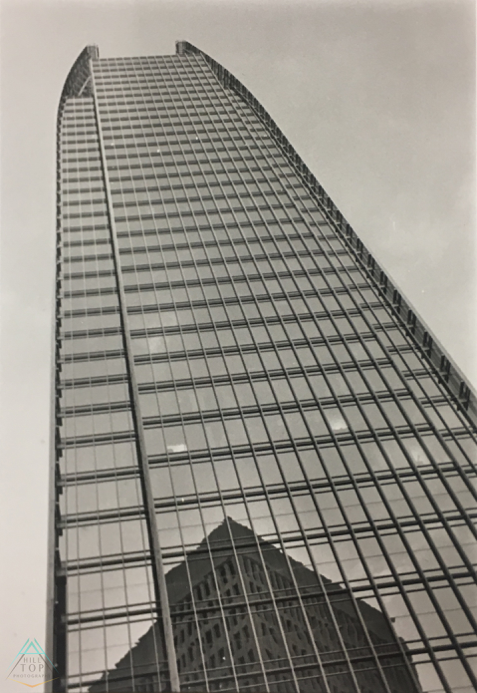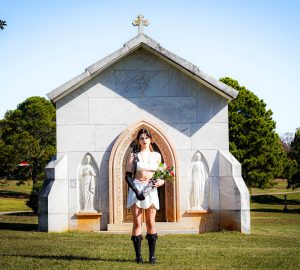by Marian Hill
A couple of days ago, after a long three hours in the darkroom, I got into my Uber with the thought of home on my mind and the smell of chemicals on my hands. My driver could tell. “Sorry about the smell. I’ve been in the darkroom,” I said, apologizing before she could mention it.
“Darkroom? What’s that?” she inquired. Then started a conversion of explaining and re-explaining the demanding and difficult process of the darkroom.
Quite often, I forget how foreign the process is for non-photographers. When walking into the darkroom, one might feel the same as if standing in a sacred cave. There is a cool wetness to the walls and floors, a melodic humming of the print dryer fading into the background and the pervasive smell of something very dank. Here (and really, only here) is where traditional black-and-white photography can be produced.
For the photo to be developed, the material used must be light sensitive. Therefore the darkroom must “light-tight.” I use that term loosely because there is some light that can be used in the darkroom and, to be honest, the darkroom isn’t even the darkest room that a photographer works in. To begin, after the used roll of film has been successfully wound back into its canister, the photographer must — and I am being completely literal when I say this — lock themselves in a small closet and feed the film into a reel, which will then be put into an even larger canister.
The steps taken to develop the film and produce the negatives with which photos are made are tedious and can delay the darkroom process for a good hour or so. In this line of work, photographers must not take risks with light. If the negatives survive, then the photographer can move into the darkroom. The red light that washes over the room is safe. It won’t damage the precious silver halide salt gelatin that coats the printing paper, for photographic material is only sensitive to blue-green light rays, but is unaffected by red-yellow light. Through the witchcraft known as photography, one is able to produce a photo straight from the negative strip on a piece of paper only using light and chemicals.
It takes a village to make sure the darkroom is ready be used and is being used correctly. At SCAD, the quality and safety of the photographic development process is ensured by the upkeep of classes through amazing teachers and technology. SCAD professor Elizabeth Turk teaches film photography, historic and alternative processes and antiquarian photography. Turk commends the college on its dedication “to covering all aspects [of photography] because it better prepares our students for careers.” She spoke of classes she has in her curriculum that require the students to “make their own light-sensitive emulsion, coating artist papers and working with that. We use the images from digital cameras or film cameras, but the processes we explore in that class are cyanotype, Van Dyke, salt printing and lumen printing.”
Turk explained that learning more original, raw forms of photography, “gives students exposure to a different aspect of the medium, one that allows for much more personalized work.” Turk’s teaching assistant, graduate photography student Virginia Jackson Carr, said that SCAD’s facilities are top-notch, adding, “I probably wouldn’t have really realized that if [I] had gone into an undergrad here, because when you are used to something you take advantage of it.” She said her undergraduate school’s darkroom facilities, “didn’t even have air conditioning. And it was accessed from outside. And it was in Tuscaloosa, Ala.” One could only imagine the horrors of it.
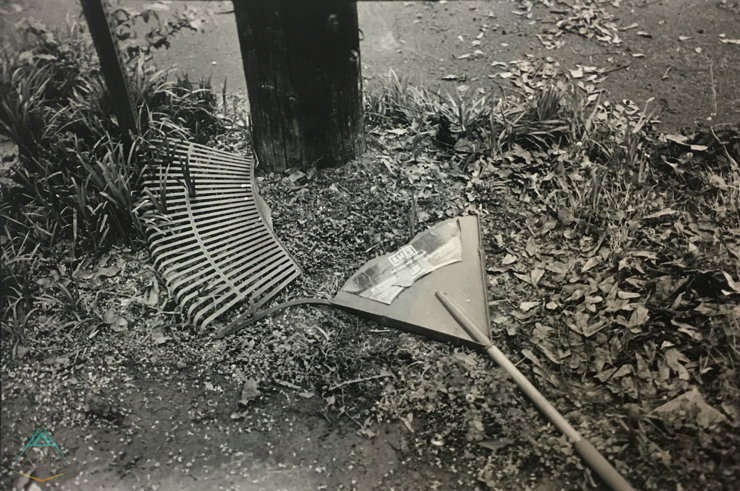
If you had the opportunity to go to the National Pinhole Day event at SCAD this past Sunday, you probably ran into these wonderful photographers, and maybe even myself. We took the day to celebrate pinhole photography, the very foundation of camera technology. The event was another way in which SCAD has successfully brought to light the magic of the darkroom to those who may have never stepped into it. Even if you missed it, you can still come up to the mysterious fifth floor of the C building at SCAD and watch the photography students play around with tubs of chemicals in the darkroom.

























